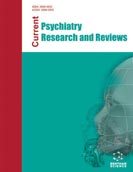Abstract
Background: Healthcare workers (HCWs) who are directly involved in the management of patients with SARS-CoV-2 infection are at higher risk of psychological disorders.
Objective: In this study, we evaluated the risk factors related to mental health disorders in HCWs active in the management of the COVID-19 pandemic in Mashhad, Iran.
Methods: This was a cross-sectional investigation performed between April 2020 and May 2020 at five referral centers in Mashhad, Iran. Patient Health Questionnaire (PHQ-9), 7-item Generalized Anxiety Disorder scale (GAD-7), Insomnia Severity Index (ISI), Impact of Event Scale–Revised (IESR), and VAS (for fear from COVID-19) to assess depression, anxiety, insomnia, distress and fear related to COVID-19 were filled. Risk factors were evaluated by the regression model.
Results: Mean ± SD age of participants was 33.84 ± 7.03 years. Most were females (64.2%). Of 360 participants, 252 had some degree of an anxiety disorder (70%), 63.8% had depression, 55.8% had insomnia, and 72.8% had distress. Work experiences (OR: 0.94, 95% CI = 0.901- 0.983, p = 0.007), exposure to COVID-19 patients (OR: 2.54, 95% CI = 1.37-4.69, p < 0.001), and job status (OR: 1.40, 95% CI = 1.19 -1.54, p < 0.001) were significant predictors of anxiety. Age (OR: 1.15, 95% CI = 1.05-1.27, p = 0.002), exposure to COVID-19 patients (OR: 1.95, 95% CI = 1.04-3.64, p = 0.037), work experience (OR: 0.86, 95% CI = 0.78-0.93, p < 0.001), having children (OR: 0.58, 95% CI = 0.39- 0.87, p = 0.008), and being infected with COVID-19 (OR: 9.95, 95% CI = 1.92-51.64, p < 0.001) were the significant independent factors for depression in participants.
Conclusion: COVID-19 could significantly affect HCWs mental health status, specifically depression. By targeting these predictors, health policymakers can reduce the burden of psychological disorders in HCWs.
Graphical Abstract
[http://dx.doi.org/10.1056/NEJMoa2001316] [PMID: 31995857];
(b) Ahanchian H, Moazzen N, Joghatayi SH, et al. Death due to COVID-19 in an Infant with Combined Immunodeficiencies. Endocr Metab Immune Disord Drug Targets 2021; 21(9): 1649-52.
[PMID: 33087035];
(c) Keihanian F, Bigdelu L. Cardiovascular considerations in COVID19: A comprehensive review. Ther Clin Risk Manag 2020; 16: 1089-97.
[http://dx.doi.org/10.2147/TCRM.S264377] [PMID: 33204097];
(d) Keihanian F, Poorzand H, Saeidinia A, Eshraghi A. Echocardiographic and electrocardiographic findings in COVID-19 patients: A cross-sectional study. Int J Cardiovasc Imaging 2022; 38(10): 2167-75.
[http://dx.doi.org/10.1001/jamanetworkopen.2020.3976] [PMID: 32202646]
[http://dx.doi.org/10.1371/journal.pone.0243597] [PMID: 33296437]
[http://dx.doi.org/10.1176/appi.ps.55.9.1055] [PMID: 15345768];
(b) Lee AM, Wong JGWS, McAlonan GM, et al. Stress and psychological distress among SARS survivors 1 year after the outbreak. Can J Psychiatry 2007; 52(4): 233-40.
[http://dx.doi.org/10.1177/070674370705200405] [PMID: 17500304]
[http://dx.doi.org/10.1007/s11136-013-0489-3] [PMID: 23912857]
[PMID: 32489190]
[http://dx.doi.org/10.1097/01.mlr.0000167181.36730.cc] [PMID: 15970782]
[PMID: 15479961]
[PMID: 28659983]
[http://dx.doi.org/10.1177/070674370404900607] [PMID: 15283533]
[http://dx.doi.org/10.1177/070674370905400504] [PMID: 19497162]
[http://dx.doi.org/10.3947/ic.2015.47.4.278] [PMID: 26788414]
[http://dx.doi.org/10.1097/00063110-200502000-00005] [PMID: 15674079]
[http://dx.doi.org/10.1179/oeh.2004.10.4.421] [PMID: 15702757]
[http://dx.doi.org/10.1001/jama.290.20.2662] [PMID: 14645305];
(b) Shih FJ, Gau ML, Kao CC, et al. Dying and caring on the edge: Taiwan’s surviving nurses’ reflections on taking care of patients with severe acute respiratory syndrome. Appl Nurs Res 2007; 20(4): 171-80.
[http://dx.doi.org/10.1016/j.apnr.2006.08.007] [PMID: 17996803]











